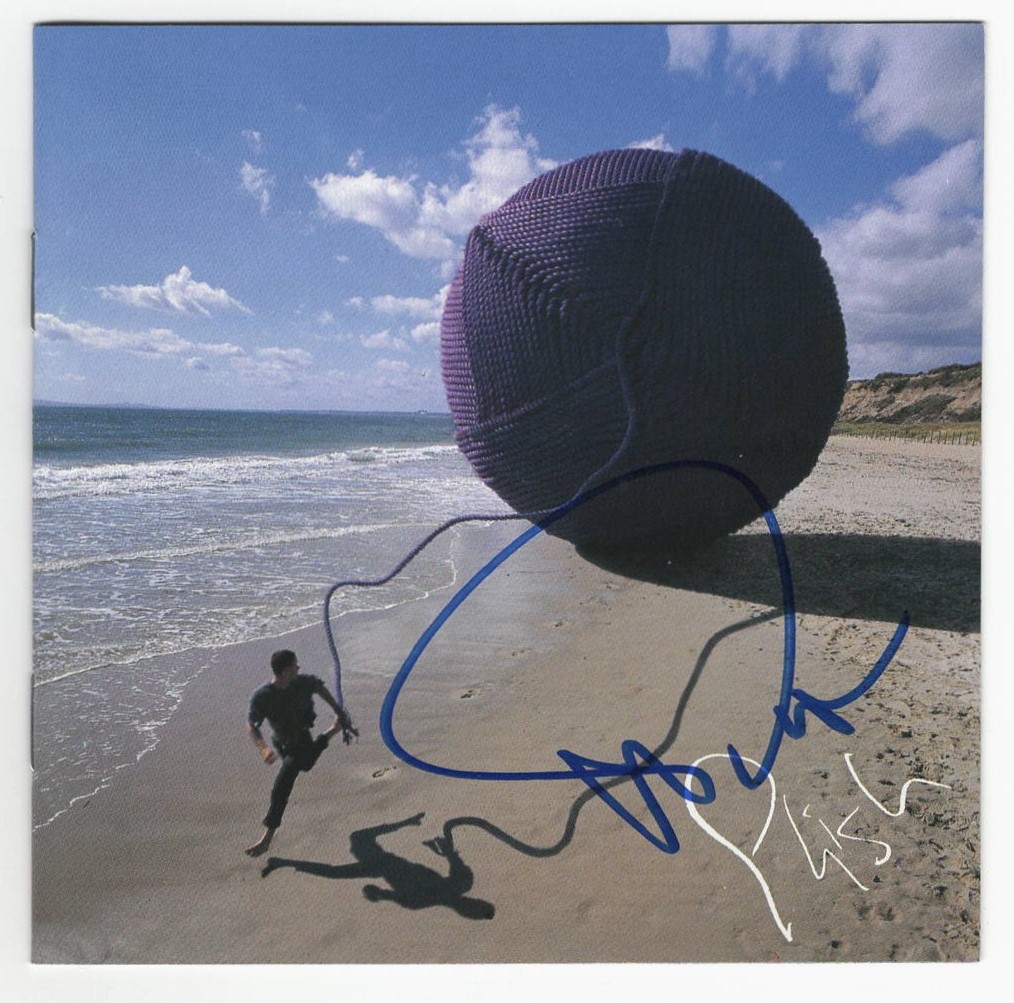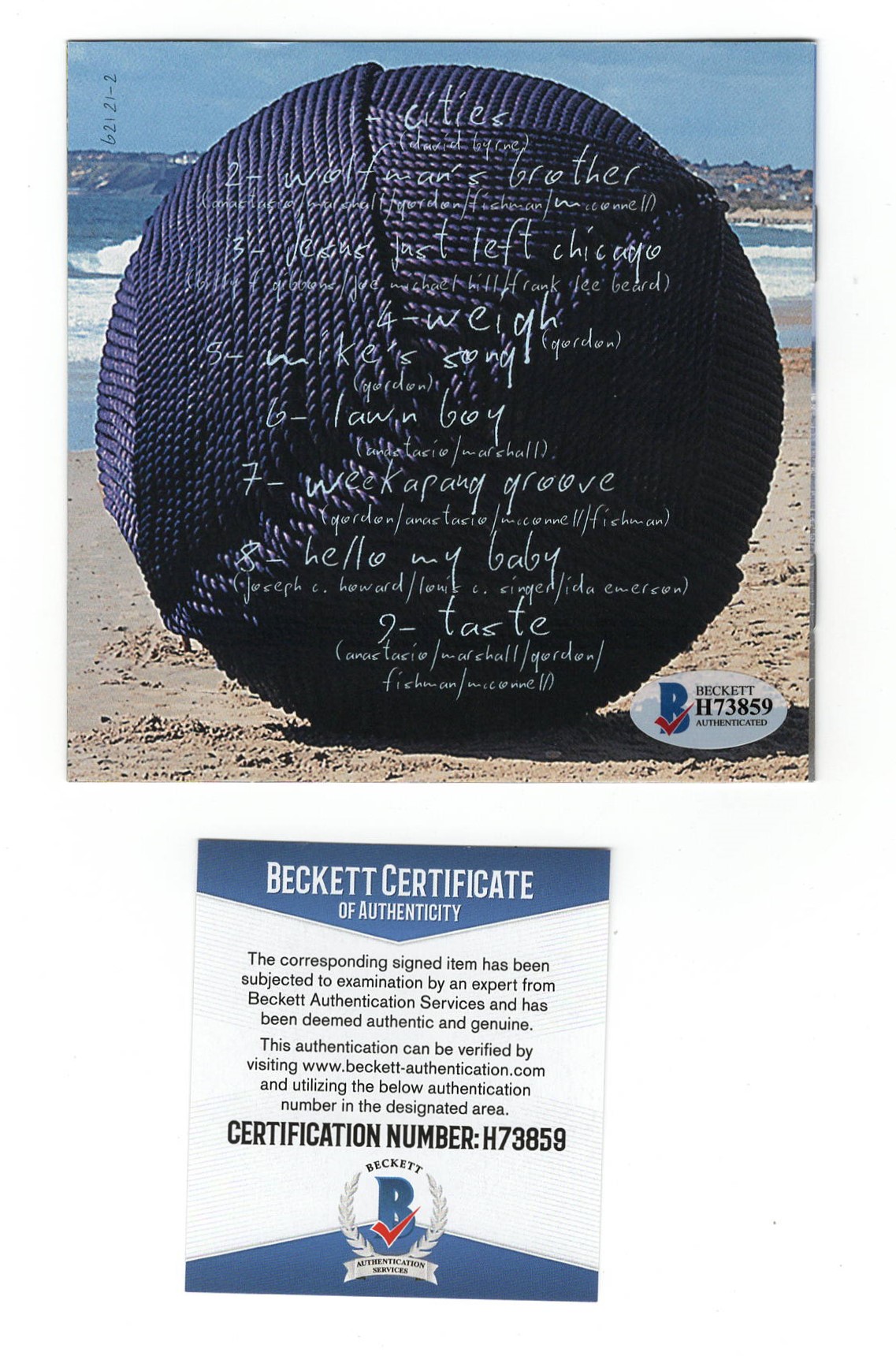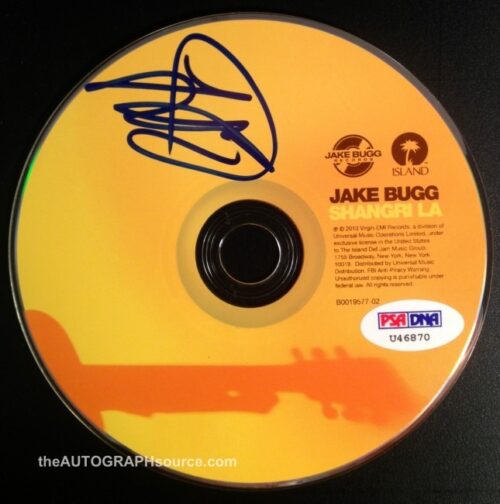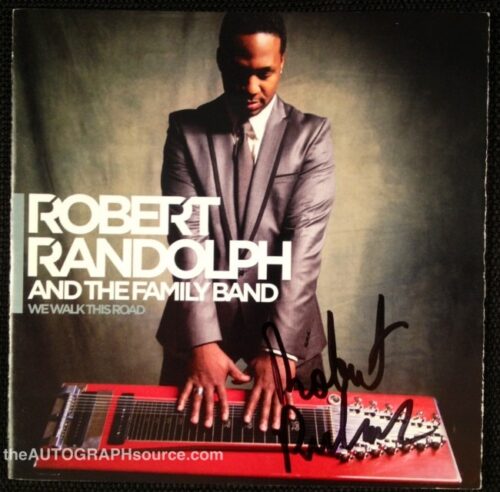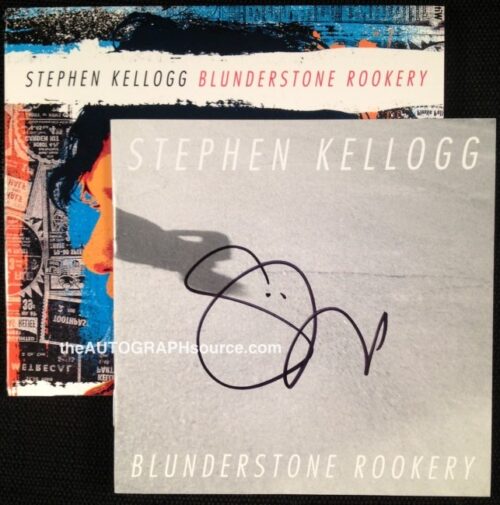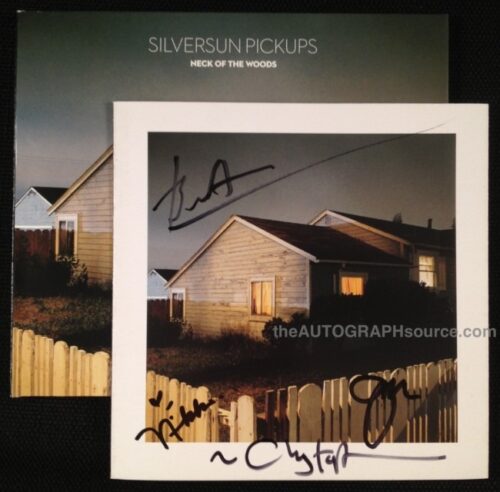Description
Phish “Slip Stitch and Pass” CD booklet, autographed on the cover in blue marker by Trey Anastasio.
NOTE: Sold as only the CD booklet. The CD and jewel case are not included.
Sold with Certificates of Authenticity from independent third-party authenticator Beckett Authentication Services.
Slip Stitch and Pass is the second official live album from Phish.
It was released on October 28, 1997, by Elektra Records and has nine tracks from the band’s March 1, 1997, show at the Markthalle Hamburg in Hamburg, Germany, which was part of Phish’s 1997 European Tour. The album marked the first time that concert staples “Mike’s Song” and “Weekapaug Groove” had appeared on an official Phish release, despite both having been part of the band’s repertoire since the 1980s.
Three of the album’s nine songs are cover songs: “Cities” from Talking Heads, “Jesus Just Left Chicago” from ZZ Top and the traditional a cappella standard “Hello My Baby”. In addition, during the final jam segment of “Mike’s Song”, the band quotes (or ‘teases’) Pink Floyd’s “Careful with That Axe, Eugene” and elements and lyrics from The Doors song “The End”. Both “Lawn Boy” and “Weekapaug Groove” subsequently have lyrics from “The End”.
The close of “Weekapaug Groove” interpolates the end section of the Rolling Stones’ “Can’t You Hear Me Knocking”.The jam on “Wolfman’s Brother” is indicative of the band’s foray into funk music, which dominated the group’s improvisation over the next several years. The song also includes a tease of the band’s own instrumental tune “Dave’s Energy Guide.”
Renowned graphic artist Storm Thorgerson designed the album cover.
About the image:“I was impressed back then by their live show because Phish were clearly intent on playing music (not going through the motions), keen to improvise and adapt (within context), and to extend songs and pieces in unexpected ways. I was even more impressed to learn later that they did not have a set list. Good grief, no set list!…The design selected featured a man running down a beach holding a piece of yarn (could be wool, string, or rope) which he was pulling from a giant ball behind. This humongous ball of wool (or yarn or string) was intended, in a loose kind of way, to represent the music that the musician, the figure on the beach, was unraveling. The wool was the theme or melody line, which the musician would tease out, running with it until the extensions and variations were exhausted, the music was over, and the giant ball fully unwound.”


